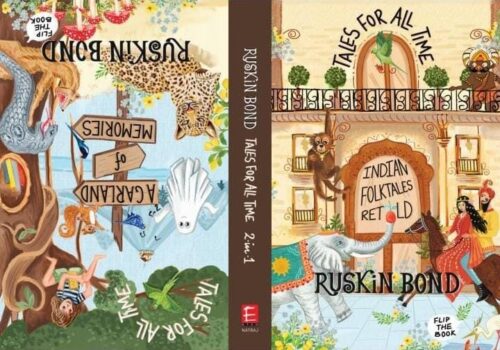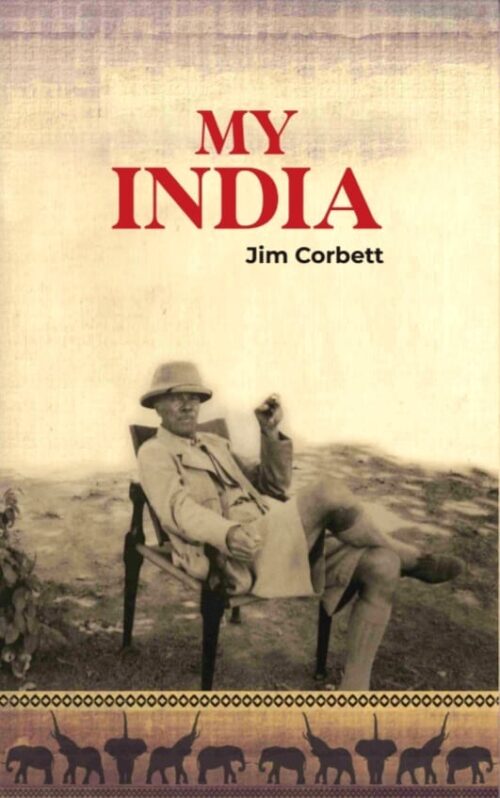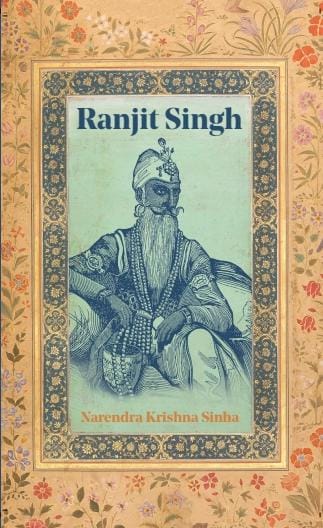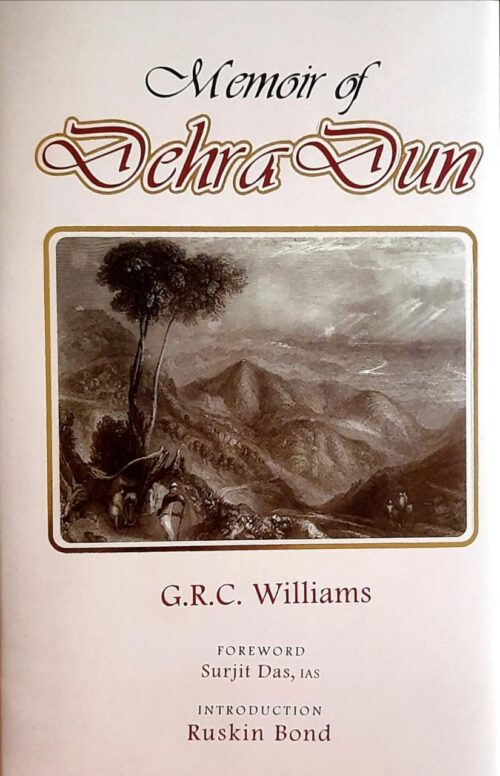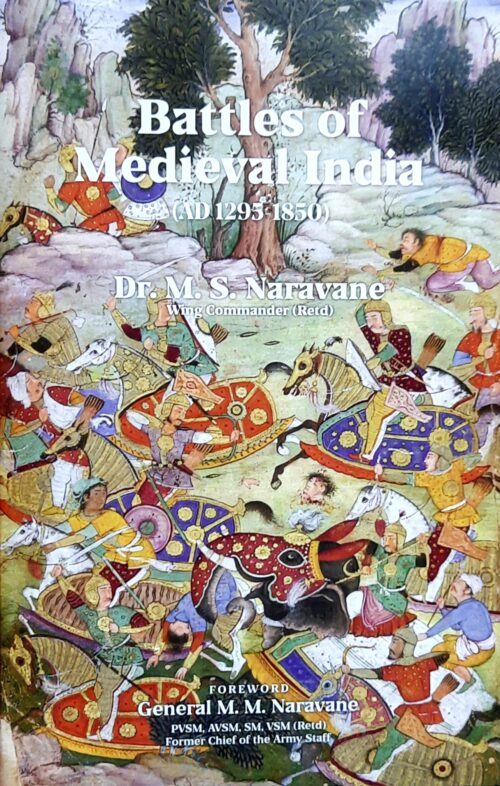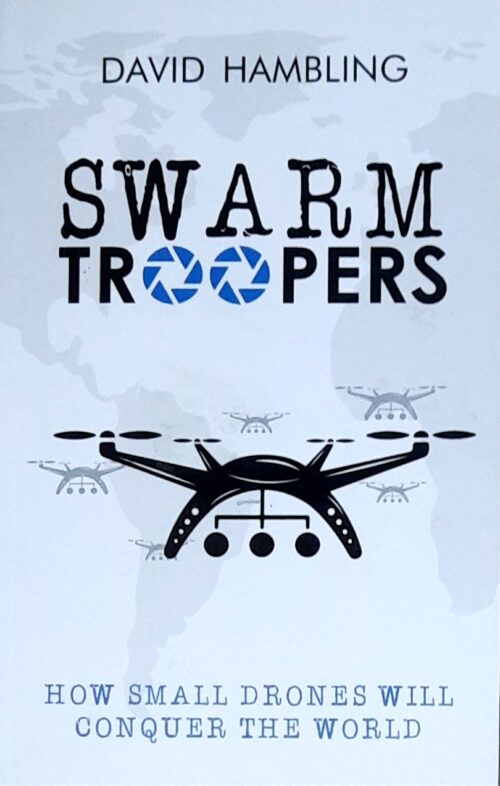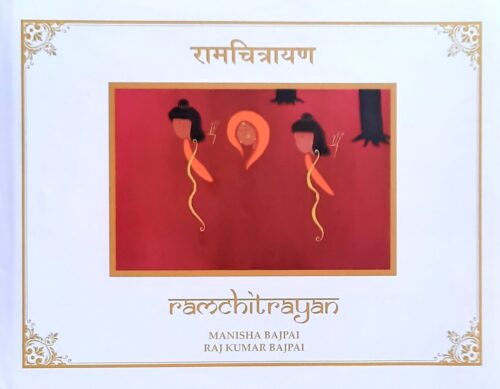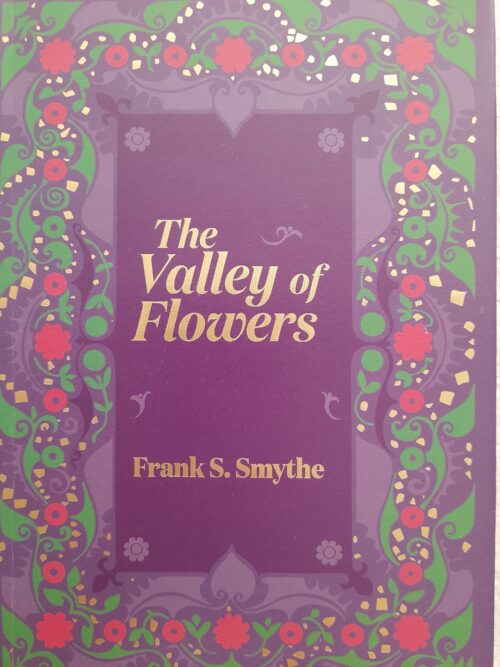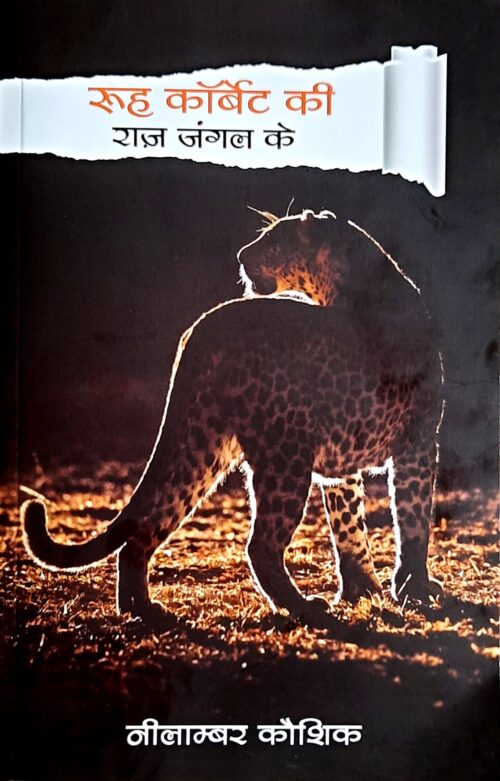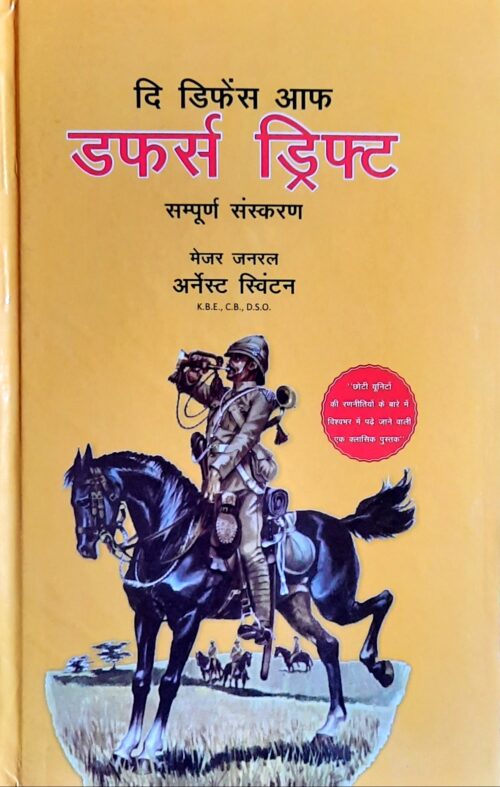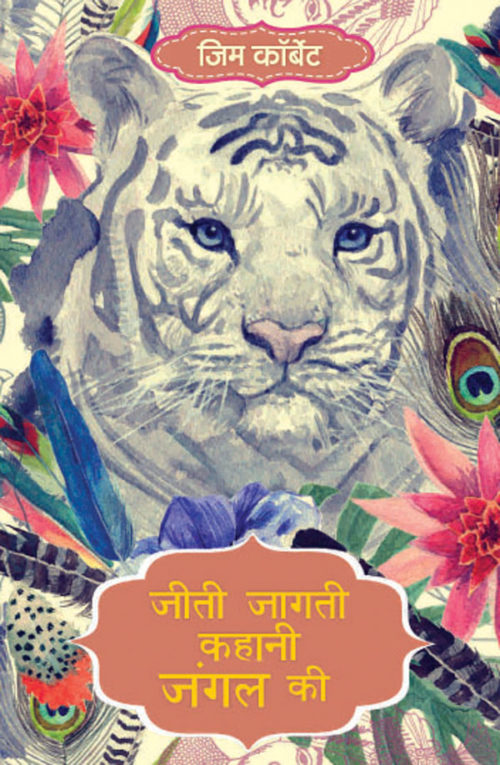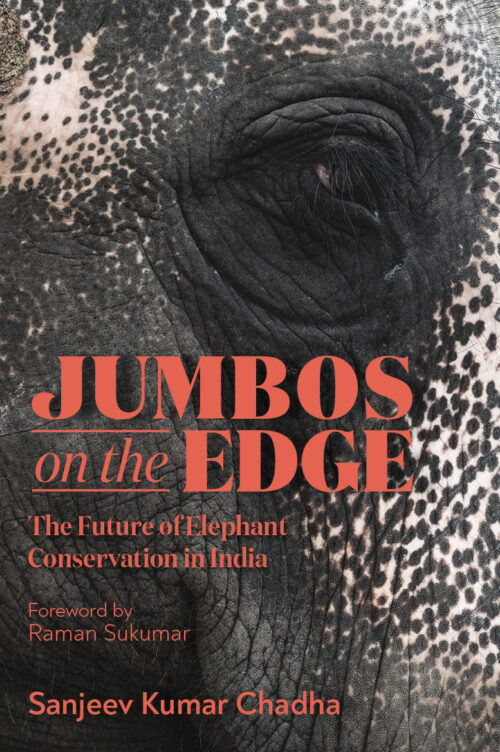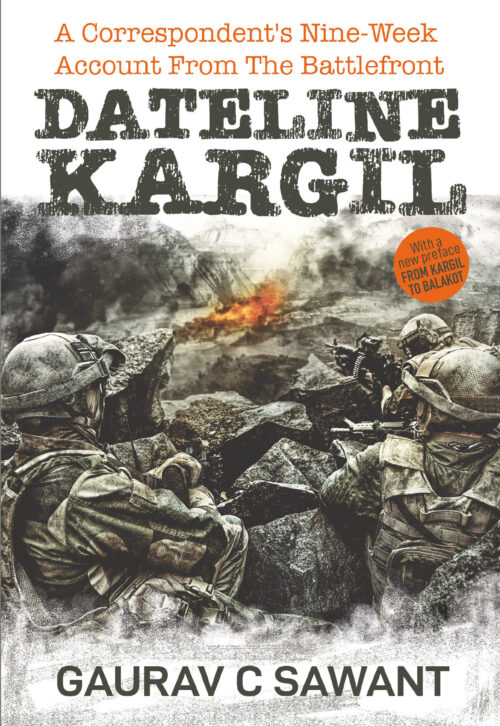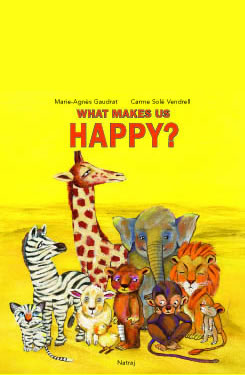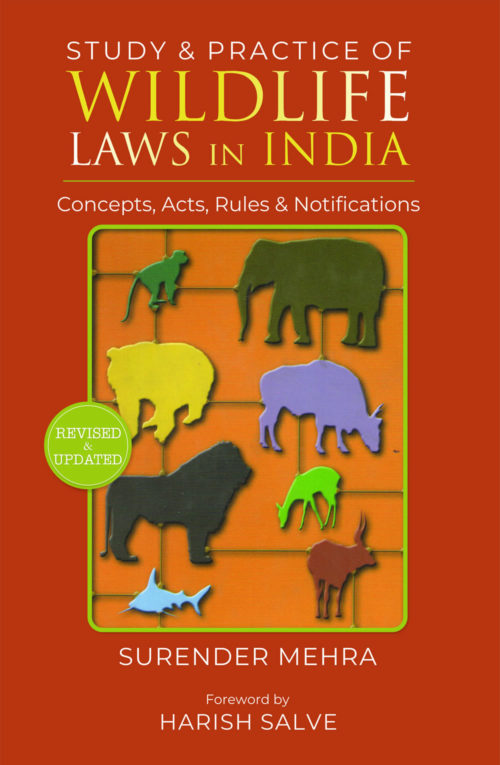-
This is a collector's edition of two of Ruskin Bond's favourite books in one upside down edition! "Tales for all Time" brings together "A Garland of Memories" which is a collection of biographical short stories with "Indian Folktales Retold" which is an interesting retelling of India's famous folktales. In vintage Bond style, expect this collection to make you smile, laugh and cry.
-
In My India, Jim Corbett gives us a glimpse into a life spent amongst village folk in the summer seat of British Imperial India, then known as the United Provinces (now Uttarakhand). Unlike his classic works about jungle and wildlife lore - where he recounts famous hunts in the midst of India's diverse and rich wildlife habitats— here Corbett sheds light on the India that he adored passionately for its 'simple and hardworking souls' who enriched his life. India was then on the cusp of crucial international and national movements. This book is a tribute to the charming characters who would otherwise not have appeared in the pages of history had Corbett not written about them here and made them unforgettable and immortal. Join Corbett as he takes you through the remote trails of villages in the foothills of the Himalaya introducing you to endearing stories of resilience, loyalty, and fortitude.
-
Sinha's work brings together a mass of information on Ranjit Singh as a soldier, a great diplomat and an exemplary statesman. After the collapse of the Mughal Dynasty, Ranjit Singh, founder of the Sikh rule in Punjab, steered his ambition to expand Sikh power in the face of Afghans in North West India and the British East India Company. The book gives a detailed account of how Ranjit Singh navigated his relationship with the Afghans on the one hand and his Indian and British neighbours ( The East India Company) on the other. The author also meticulously lays out information on the government, institutions and policies under the rule of Ranjit Singh, inclduing an estimate of the Sikh military system. The Sikhs formed one of the most formidable mlitary powers in India.
-
The Doon Valley, distinguished by its singular beauty and by the excllence of its many instuttions has won for itself a place of pre-eminence in the history of India. While its origins as a habitation are shrouded in the mists of time, it holds a place in folklore, legend and mythology. It appears firmly rooted in chronicled history only late in the sixteenth century. Thereafter myths give way to real historical figures and their combats with clash of steel and the bark of muskets as they strive for possession of this fertile valley. Replete with delightful anecdotes and lavish in its praise of the natural beauty of the valley, this book is a perfect addition to every Doon lover's bookshelf.
-
Travel back to lesser known, but vitally important chapters of India's war history dating from the 13th century to the 19th century in this expansive book. The author, an armed forces veteran and scholar, carefully selects befitting battles and explains their importance not just in India's history but also India's present. Filled with interesting diagrams and fascinating maps, this book provides great lessons and insights for today's strategists and leaders, whether in the military or outside. It is also a historian's delight as it revisits an unexamined past with great flair and high quality analysis.
-
Advances in technology have set the stage for a major shift in how we fight wars and gather intelligence. Drones - cheap and plentiful - are poised to support and, in some cases, supplant current weapons, at a fraction of the cost. Not everyone is convinced. How can small drones with limited battery life stay in the air long enough to achieve anything on a strategic scale? And how can anything so small make an impact? But with new tchnology that allows drones to draw energy from the environment and swarms of thousands of drones acting together, their impact is anything but small. From anti-personnnel weapons to miniature demolition devices and high-temperature incendiaries, new technology is making small drones into true engines of destruction. The high cost of miliary aircraft, the rise of biomimetic technology, advances in the science of swarming behaviour - all of these are leading us to a future where drone swarm rules the skies. "Swarm Troopers" will show you what that future looks like and explore whether or not we''ll be ready for both the opportunities and threats it may bring.
-
This unique and gorgeously produced book is composed of 108 paintings on acrylic as a humble attempt by eminent artists to bring out in a nutshell the devotion, philosophy and lyrical essence of the epic that sends out the message of love, sacrifice and valour, depicting the classic along with the corresponding verses and their plain Hindi and English versions. The beauty of the artwork in tones of blue and orange bring out the story of the epic page by page. The book is a must have in every home and an ideal gift for loved ones.
-
This edition marks the 120th Birth Anniversary Edition of this little gem on leadership that makes for mandatory reading for defence personnel across the world. The first section focuses on "Psychology and Morale" with ten chapters on the development of military psychology and how it is applied to morale, moral education, discipline and military values. Morale, accordingly to Copeland is the 'secret weapon' and he insists that 'physical superiority is not as important as moral superoirity." How then can this most desirable of human qualities be acquired? According to Copeland, it depends 'on an incalculable number of factors', the first and strongest of which he considers is good leadership. The seond section of this enlightening and well researched book talks about "psychology and leadership" - these next ten chapters focus on the role of the leader in the training and education of military individuals and units. Leadership is a way of life, acording to Copeland.
-
Immensely popular as a reference text for entrance examinations for over three decades, the book is an ideal companion to current events from around the globe. The book covers a gamut of subjects like sports, science, economics, and defence news. It also has a political section that critically examines national and international politics. This year the book has a section on the Russia Ukraine War. The book also carries a section on people who have mades across the world. Unbiased and well researched, the book is your trusted companion to developing an opinion on the world around you.
-
Nature writing at its best! This book is the perfect addition to every mountain lover's bookshelf. In 1931, a party of British mountaineers—including Frank S. Smythe—on their way back from a successful ascent of Mount Kamet, were looking for shelter from inclement weather in the wilderness above Joshimath in present-day Uttarakhand. They chanced upon the lush and colourful Bhyundar Valley, the Valley of Flowers. In the monsoon of 1937, Smythe returned to the Valley with four Tibetans from Darjeeling. On this adventure, Smythe extensively explored the Valley, identifying and collecting flowers and seeds from among the wealth of plant life. He and his friends also scaled the Nilgiri Parbat and the Mana Peak and were defeated by Mount Rataban. Beset by the rains, the party was nearly always soggy and, once, an Abominable Snowman gave them the fright of their lives. Yet, these were but minor prices to pay for the privilege of witnessing the Himalaya in its infinite variety and for a great deal of time usefully spent ruminating on the joys of idleness. "For solitude in the Valley of Flowers taught me the insignificance and incapacity for happiness of thought as compared with a meditation that knows no intellectual limitations, but is content to accept with childlike faith and delight the infinite beauties and granduers of the universe."
-
This very unique book is a blend of travel writing mixed with a deep keenness to explore the mystery of the jungle and what lies behind the darkness of it. The author blends his travels to India's famous Corbett National Park with his understanding of the deeper meaning that the forests and their darkness hold. While on one hand the author shares his experiences of travels in the Park and information about the Park and its history, he also shares true stories of the supernatural, first hand experiences, anecdotes from residents and fellow travellers to raise questions in the mind of the reader - whats true and whats not - is there a higher power that controls situations as they occur or is it man's limitation at understanding the world beyond us.
-
A short treatise on the art of tactical warfare, set in the Boer War (1899-1902), this classic piece of military fiction was published by Major General Ernest D Swinton when he was still a captain in 1904. The appropriately named Lieutenant N. Backsight Forethought (BF), a rookie commander of a platoon of fifty is tasked with defending a river crossing—Duffer’s Drift. Manifested in six dream scenarios and actions of a mortified BF, who learns a series of “lessons” at his expense, his final unconventional defence succeeds in routing the Boers. The book quickly acquired cult status on small unit tactics, and armies across the world have had it on their required reading lists for subsequent generations of young officers, including in India. It has also been translated into several languages. Swinton's style of literary fiction significantly impacted the writings of several authors in the military arena. While some contextual advice may be dated, the emphasis on critical thinking remains relevant, and the principles are evergreen. A must-read
-
-
From his abode in the mountains in the foothills of the Himalaya, India's most loved author, Ruskin Bond has observed the beauty and serenity of nature, unspoilt. For over sixty years, the mountains, forests, birds and animals have inspired innumerable stories and tales by India’s favourite author. In this book, a selection of his most insightful, informed, wise and witty writings about nature are brought to life by a collection of watercolour illustrations by artist Prenita Dutt. If you had ever forgotten that humans too are creatures of nature, this book will reconnect you to your habitat. Nature, through Bond’s delightful words, will educate and enlighten.
-
This well-researched and incisive book on personal finance debunks the myth and fear that surrounds investing for Indians. Anand explains every concept bit by bit and brings all his wisdom, and reading, and learning from the masters of the game, to your table, so that you can use his pearls of advice, termed as musings to 'mint crores while you earn only in thousands' - quoting Qamar Waheed Naqvi, well known journalist. Written as a tool for those starting out in their careers, this book uses an example of two characters, Anshreya and Honeycool, whose journey is delightfully captured in the book. This book has been acclaimed by leading entrepreneurs, finance and banking sector executives,actors, authors, sportspersons and media legends. The author is an army officer with a hugely popular blog - andyfinancial.blogspot.com. He is currently pursuing his PhD.
-
Jungle Lore is the closest Jim Corbett ever came to an autobiography. In this book, one sees the real soul of a man and his love affair with the people, jungle, and animals of the Kumaon hills. This is the hindi edition of the book.
-
"arranting immediate and long term solution. This is an excellent book which throws light on mitigation measures to be adopted in elephant landscapes fragmented by varied land uses, including heavily used infrastructure. This timely publication would be extremely useful for field managers, stakeholder departments and policy makers." - Dr. Rajesh Gopal
India faces a serious challenge today towards long term in-situ conservation of the elephant population. This is a timely publication as it explains issues related to elephant depredation in the human enclaves and fragmentation of elephant landscapes across the elephant range. The Field Managers and policy makers would benefit from the studies on alternative cropping patterns as mitigation strategy in and around the forests where interspersion ratio of forests and crop lands is a major cause of elephant depredation.
The book would be extremely useful for field managers, stake holders from different departments working in the elephant landscapes. The challenge of increasing linear infrastructure through the forest landscapes is a serious one. The book deals at length with the mitigation strategy to be adopted in linear projects like national highways, railways, irrigation projects, transmission lines, etc. These strategies can be incorporated in the project right at the inception stage so as to reduce the impact on the wild life. The designs of different mitigations explained in the book can be suitably changed to different landscapes in the country. -
The book gives a gripping, first-hand account of the author’s nine-week long stay in Kargil (during the encounter) and his experiences. He succinctly details the operation with special emphasis on the human side of the conflict. The graphic depiction of the war and candid interviews with the top brass makes for a true-to-life experience for the reader.
-
The man eating tiger has speed, agility, muscle power, lightning reflexes and a ferocious killer instinct. It weighs 500 lb. The man has a cool head, a sure eye, a rifle and two brass cartridges. He weighs only 160 lb. The tiger growls, bursts out of the long grass, and launches itself . . .This was the drama that played out in the life of the legendary writer and conservationist, Jim Corbett, on several occasions. For him, the hunt was not about trophy tiger skins, or for the prestige of being a famous shikari – but to save lives when a man eater was on the rampage. Born in Kumaon, Corbett grew up in the jungle. He was well versed with its laws, and heunderstood its language. This hunter of the man eaters went on to become a die-hard conservationist, working to preserve and promote the majestic tiger. He harboured a great love for India and its people – of all castes and creeds, which is evident through all his writings.In a novel inspired by Jim Corbett's life and writings, author and conservationist, Harnihal Sidhu tells the epic tale of India’s most famous tiger hunter and conservationist. Corbett's journey was a difficult one, with moments of wild joy, suffering and heartbreak.Burning Bright is not a biography, a formal history or an academic study. It is a gripping tale told by a charmed storyteller, based on the life of a great man. Sometimes, the shortest road to the clearest view runs through the land of fiction.
-
Very simply, this publication describes the philosophy which distinguishes the U.S. Marine Corps. The thoughts contained here are not merely guidance for action in combat but a way of thinking. This publication provides the authoritative basis for how we fight and how we prepare to fight. This book contains no specific techniques or procedures for conduct. Rather, it provides broad guidance in the form of concepts and values. It requires judgment in application. Warfighting is not meant as a reference manual; it is designed to be read from cover to cover. Its four chapters have a natural progression. Chapter 1 describes our understanding of the characteristics, problems, and demands of war. Chapter 2 derives a theory about war from that understanding. This theory in turn provides the foundation for how we prepare for war and how we wage war, chapters 3 and 4, respectively.The U.S. Marine Corps is a branch of the United States Armed Forces responsible for providing power projection from the sea, using the mobility of the United States Navy to deliver combined-arms task forces rapidly. It is one of seven uniformed services of the United States. In the civilian leadership structure of the United States military, the Marine Corps is a component of the United States Department of the Navy, often working closely with U.S. naval forces for training, transportation, and logistic purposes; however, in the military leadership structure the Marine Corps is a separate branch.
-
This kind of War has been studied by two generations of soldiers. Fehrenbach describes good decisions and bad ones with insight and expertise. But what he does best of all and what is so memorable, is his eloquent, sometimes painful description of the Gls who must bear the vurden of those decisions. That is the awful beauty of this book - it cuts straight to the heart of all the political and military errors, and reveals the brave souls who have to bleed and die for mistakes made. A timely reissue of a military classic. Theodore Reed Fehrenbach, Jr. was an American historian, columnist, and the former head of the Texas Historical Commission (1987-1991). He graduated from Princeton University in 1947, and had published more than twenty books, including the best seller Lone Star: A History of Texas and Texans and This Kind of War, about the Korean War. Although he served as a U.S. Army officer during the Korean War, his own service is not mentioned in the book. Fehrenbach also wrote for Esquire, The Atlantic, The Saturday Evening Post, and The New Republic. He was known as an authority on Texas, Mexico, and the Comanche people. For almost 30 years, he wrote a weekly column on Sundays for the San Antonio Express-News. T.R. Fehrenbach was 88 years old at the time of his death. -
"We need to talk to our children about what true happiness really means. If we dont, the kind of society we live in will lead them on to the incorrect and untrue track making them materialistic, selfish and competitive.This joyful, practical and poetic book will help adults and children talk and reflect on what makes us truly happy, and move towards the real joys of life! - Christophe André, renowned French Psychiatrist This unique book with unusual open and close flaps, chamring illustrations in large format asks simple questions that make little children think of how the simple things they can do and learn will help them grow up into happier and more content adults. Questions like how will you like to win, alone or by taking others along? When you see someone in trouble, will you ignore them or help them?
-
This is the first ever comprehensive book on wild life law enforcement in India. It explains the various interpretations and legalities pertaining to Indian wild life laws. The details of the case laws provided offer a better understanding of the procedures involved in the investigation and trial of wild life crimes.
Part I of the book deals with the conceptual topics like evolution and salient features of wild life laws, legal procedures involved in investigation and trials of wild life cases, powers and privileges of forest officers, CITES and its legal enforcement in India, legalities of captive management and legal provisions related to the Forest (Conservation) Act, 1980. Part II deals with various provisions and amendments made thereupon under the Wild Life (Protection) Act, 1972. These provisions are further elaborated through relevant case laws and commentaries for better understanding of a particular provision. Part III discusses rules, policies, statutes, and guidelines related to wild life law enforcement issued at national and international fora. Part IV of the handbook deals with other related laws such as the Wild Birds and Animals (Protection) Act, 1912, the Elephants Preservation Act, 1879, and the Prevention of Cruelty to Animals Act, 1960.
The history of conservation in India dates back several centuries – it carries utmost importance in the shastras, epics and other social codes. However the first ever comprehensive legal code was formulated as the Wild Life (Protection) Act, in 1972. The laws related to wildlife enforcement are thus still at an evolving stage.
We urgently need strong wild life law enforcement in India as the laws exist but poor implementation and systemic deterrents restrict effective pro-action. This book delves into a detailed analysis of the laws in place in India – while it explains the laws, the book also provides extensive case studies.
The book will be very useful for Forest officials and staff dealing with various issues in wild life management in the field, forest authorities dealing with various issues in captive management such as Zoo Keeping, transportation and immobilization of animals in distress. This book will further help wild life enforcement agencies, police personnel dealing with prevention, detection, investigation and trial of wild life crimes, customs and other enforcement agencies dealing with enforcement of regulations under international conventions and protocols, individuals, NGOs and other authorities dealing in litigations and writ petitions in the High Courts and the Supreme Court.
SURENDER MEHRA is a member of the Indian Forest Service (batch of 1999). He graduated as Bachelor of Technology in Electronics and Telecommunication Engineering from Regional Engineering College, Kurukshetra in 1995 and in the same year he was selected for the Indian Engineering Services. In 1999, he joined the IFS.
He received the Uttaranchal State Forestry Award in 2003 for ‘Excellence in Civil Services Reforms’. He completed his PG Diploma in Wild Life Management from Wildlife Institute of India, Dehradun in 2006-07. He also holds a PG Diploma in Environmental Law from National Law School, Bengaluru.
He has worked as Deputy Conservator of Forests, Haldwani (Nandhaur Wildlife Sanctuary), Corbett Tiger Reserve and Rajaji National Park & Rudraprayag. He has also worked as faculty at the Central Academy for State Forest Service, Dehradun. In recent years, he worked as Conservator of Forests, Western Circle, Haldwani and Chief Conservator of Forests and Field Director, Corbett Tiger Reserve.
He has written the First Management Plan of Nandhaur Wildlife Sanctuary. He successfully conducted the Wild Life Monitoring study in the Western Circle and also authored its report titled ‘Status of Tigers, Habitats and Corridors in Western Circle, Uttarakhand'.
His fields of interest are Wildlife Management, Legal issues in Forests and Wild Life, Information Technology, GIS and Remote Sensing and Wildlife Photography. He has also authored a book titled “Legal Forestry” (2004).
He is currently posted as Deputy Inspector General, National Tiger Conservation Authority, in New Delhi and is also pursuing his Ph.D in Wildlife Sciences from Wildlife Institute of India, Dehradun.
-
Known as the Father of India’s Space Programme, Vikram Sarabhai’s interests included space and nuclear energy, architecture, industry and business, institution building, management development, arts, music, and theatre. He was a scientist and an entrepreneur, an educator, and a businessman. When he passed away unexpectedly at the young age of 52, he left behind a legacy few can match, having set up internationally reputed institutions and organisations that have made India proud and put us on the world map. "Dr. Sarabhai was a young person with great wisdom. There is a French saying that "if age could do and youth had wisdom, it would be a wonderful combination". Vikram Sarabhai had that combination. He was a fine blend of the thinker and doer. No one can lead a meaningful life today without combining the two." – Indira Gandhi
